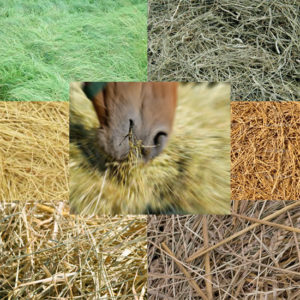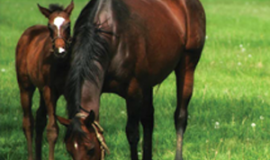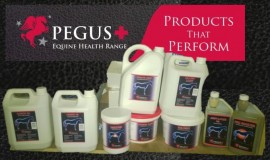Fibre in Horse Feed
The horse is a grass-eating herbivore and its digestive system is adapted to rations that consist mainly of roughage, i.e. grasses and herbs, either fresh or as hay or haylage. Roughages are rich in fibre and the horse needs this fibre for both energy and as a structural component to ensure proper functioning of the digestive system. Fibre-rich diets require a long time for chewing, keeping the horse occupied and increasing the time needed to consume a meal. This is important for the horse’s comfort and well-being, and leads to increased saliva production, which in turn helps reduce the risk of gastric ulcers.
In simple terms, we can divide the horse’s digestive system into two parts. In the stomach and small intestine, which comes first, we find enzymes that digest starch, sugars, proteins and fat. Further on, in the caecum and colon, a rich population of microbes (i.e. protozoa, bacteria and yeast) helps to break down the fibre component into short-chain fatty acids that can be absorbed and utilized for energy.
In horses on forage-rich diets, the acids produced from fibre meet a significant part of the energy needs. Although the cellulose in the fibre-fraction is composed of glucose molecules, microbial digestion transfers the glucose to short (volatile) fatty acids – which are subsequently absorbed. Consequently, the products of fibre digestion do not affect the horse’s blood sugar concentration and insulin secretion.
The fibre content of forages
This will vary widely between plant species, and from one stage of botanical development to another. When plants are harvested early in their growth, fibre content is lower, but the nutritional value of that fibre is at its highest. A later harvest will have a higher fibre content, but increased amounts of lignin present will cause a decrease in the nutritional value of the fibre. We must therefore consider what particular forage qualities will best suit different types of horses.
Analysing fibre content in horse feeds
Several methods are available for the analysis of fibre in feeds. Crude Fibre (CF) is a traditional measure of fibre in feeds, with a focus on cellulose and lignin content. Neutral Detergent Fibre (NDF) is today the most common measure of fibre in animal feeds. It measures the structural components i.e. cellulose, hemicellulose and lignin, but not pectin.
Since NDF measures more fibre components than CF, values for NDF in forages will be roughly twice as high as values for CF.
To calculate from CF to NDF, simple equations can be used:
For fresh grass: NDF = 1.14*CF + 260
For haylage: NDF = 1.09*CF + 260
For hay: NDF = 1.21*CF + 260
For grains: NDF = 2,13*CF + 62
Fibre in Pegus PC HORSE, this fibre content of feeds is expressed as Crude Fibre (CF). This is mainly because the fibre in most compound feeds is given in terms of CF. In order to calculate the total amount of fibre in a ration, fibre in compound feeds and in forage have to be measured using the same units.
Pegus PC-Horse sets the lower limit for crude fibre in the daily ration to 3 grams per kg body weight daily. The horse should preferably receive more than this and you will be warned if the fibre content of your rations is not high enough.
Pegus PC-Horse will also give a warning if the roughage dry matter in rations is too low. It should always be higher than 1 kg roughage DM per 100 kg body weight and preferably around 1,5 kg.
For information on diets for your horse or pony visit or contact Pegus Horse Feed
www.pegus.ie info@pegus.ie Free Phone Helpline R.O.I.= 1800-378463 UK = 0800 011 4182
++447710883088
The article is written by Dr. Dag Austbø at the Norwegian University of Life Sciences institution









